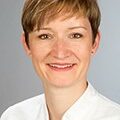Insights into the osteocyte transcriptome: from biology to bone disorders
Live Webinar: 9 July 2020, 1pm CEST
Organised by ECTS and ECTS Academy in collaboration with ANZBMS Early Career Investigator Committee (ECIC) of the Australian and New Zealand Bone and Mineral Society (ANZBMS)![]()
Date & Time: 9 July 2020, 1pm CEST
Featuring Scott Youlten, Garvan Institute, and moderated by Katharina Jähn-Rickert
Costs: Live webinar is free for ECTS members and non-members, but a registration is required. Recordings are accessible to ECTS members only.
Format:
- 5 min welcome & introductions
- 35 min presentation
- 20 min Q&A
Learning Objectives:
- There is site specific gene expression in the adult osteocyte network – why do they need to know where they are?
- Variation of the osteocyte transcriptome with sex and age – a role for perilacunar remodelling in skeletal sexual dimorphism?
- Genes associated with skeletal disorders are enriched in the osteocyte network – a tool to identify disease genes?
Featuring Scott Youlten, Garvan Institute
Scott Youlten obtained his honors degree in molecular biology before diving into the world of computation biology during his PhD. This ignited his passion for skeletal genetics, big beautiful datasets and coffee – and he can be seen with a smile on his face whenever these three things coincide. Scott believes a system-level understanding of the molecular mechanisms driving skeletal biology and disease can reveal novel therapuetic avenues. He is currently pursuing a diversity of post-doctoral projects at the Garvan Institute of Medical Research, using mouse and human data to uncover genetic mechanisms that are important for a healthy skeleton.

Moderated by Katharina Jähn-Rickert
Katharina Jähn-Rickert, PhD is a principal investigator at the Department of Osteology and Biomechanics at the University Medical Center Hamburg-Eppendorf in Hamburg, Germany. Her work focuses on the functional investigation of osteocytes in bone physiology and pathologies utilizing state-of-the-art imaging approaches – thereby she aims to work on the interface of different disciplines i.e. biomechanics, molecular, clinical, and translational research. In the past, her work included investigations on the biochemical crosstalk between skeletal muscles and bone with a focus on osteocyte viability, the mechanism of osteocytic osteolysis in a murine lactation model, and the effect of a degradable magnesium-silver-alloy implant on fracture healing. Recently, she has investigated the role osteocytes during osteophyte formation in osteoarthritic tibial plateau bone specimens, and in iliac crest bone biopsies taken from a a cohort with a high fracture incidence taken during denosumab treatment and with discontinuation without follow-up medication.
